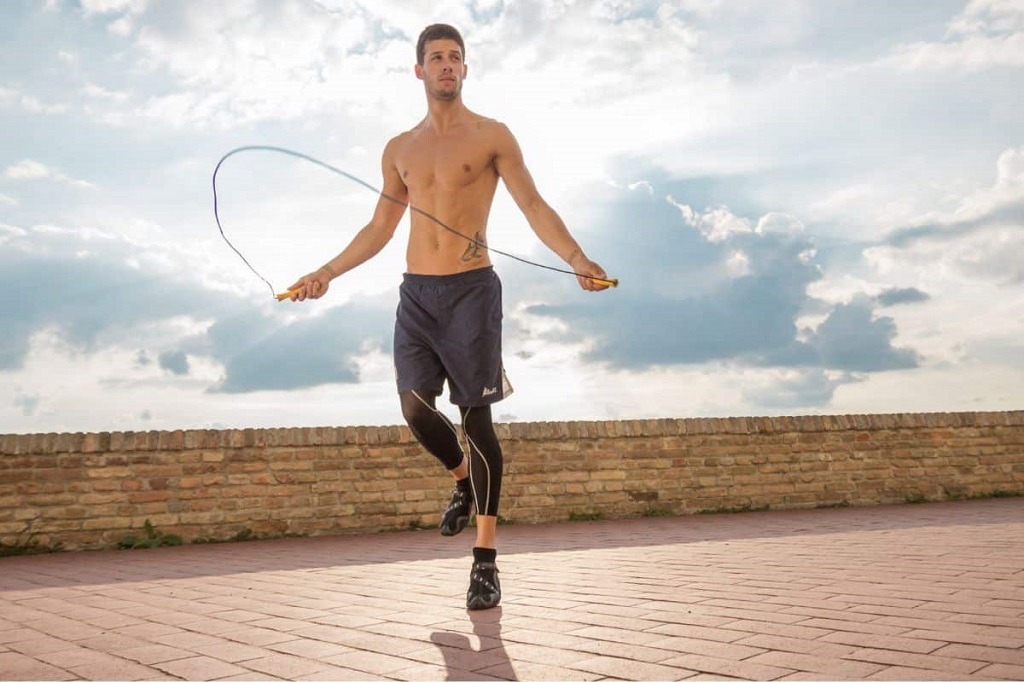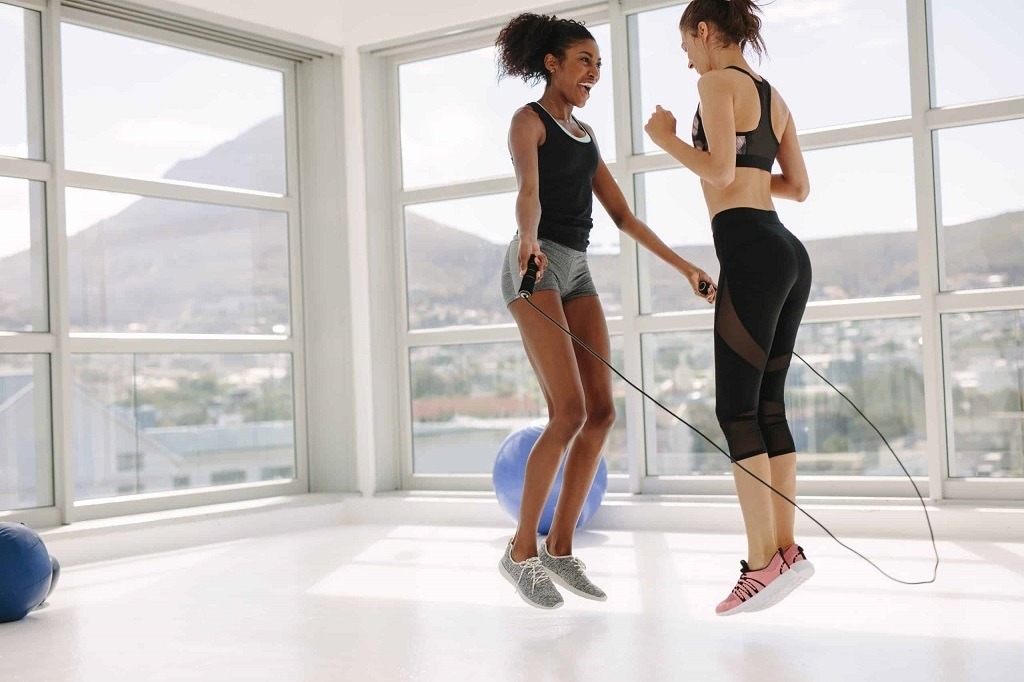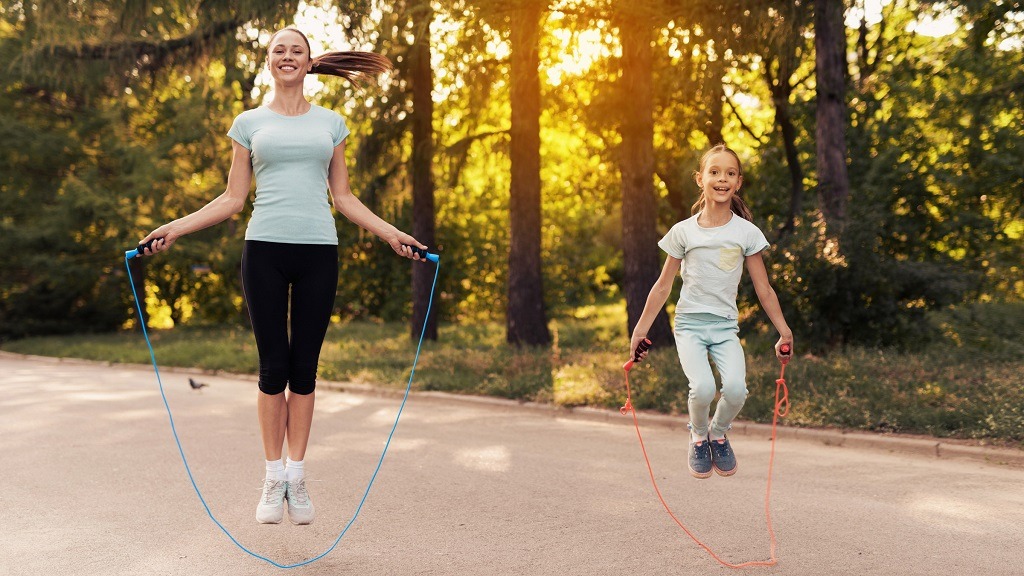Jumping rope: It’s that childhood activity we all remember, right? A simple rope, a bit of pavement, and a whole lot of fun. But what if I told you that jumping rope isn’t just child’s play? In fact, it’s one of the best exercises you can do to boost your fitness levels, burn calories, and improve your overall health. Yep, you heard me right – that innocent-looking piece of rope can be a game-changer for your fitness journey.
So, grab your imaginary skipping rope and let’s dive into the world of jumping rope, exploring why it’s such a fantastic exercise, how it benefits your body, and some tips to get you started on your jumping journey.
The Jumping Rope Renaissance
Jumping rope isn’t a new phenomenon. It’s been around for centuries, dating back to ancient civilizations like Egypt and China. But in recent years, it’s experienced a renaissance of sorts. Why? Because people have rediscovered its incredible fitness benefits.
You may be curious about the recent surge of interest in jumping rope. The truth is, there are many good reasons for it. One of the main reasons is that jumping rope is a simple and affordable way to achieve a full-body workout, which is why more and more people are buying rope. Let’s examine this trend more closely.
1. It’s Incredibly Efficient
In our fast-paced world, time is a precious commodity. The good news is that jumping rope is an incredibly efficient workout. In just 10-20 minutes of jumping, you can get a killer full-body workout that’s equivalent to 30 minutes or more of jogging.
Think about it like this: you’re burning a ton of calories, working your muscles, and improving your cardiovascular fitness all in one go. Plus, you can do it almost anywhere – at home, in the park, or even while traveling. No need for a fancy gym or expensive equipment.
2. It Burns Calories Like Crazy
If you’re looking to shed some pounds, jumping rope should be your new best friend. It’s a high-intensity workout that torches calories at an impressive rate. In fact, you can burn up to 300 calories in just 15 minutes of jumping – that’s more than running or cycling.
The reason it’s so effective at burning calories is that it engages multiple muscle groups simultaneously. It’s like a symphony of muscles working together to help you shed those extra pounds.
3. It’s Cardiovascular Gold
Your heart is a muscle, and just like any other muscle, it needs exercise to stay healthy and strong. Jumping rope is a cardiovascular exercise that gets your heart pumping and your blood flowing. This, in turn, improves your overall cardiovascular fitness, reducing the risk of heart disease, stroke, and other cardiovascular issues.
But here’s the kicker: jumping rope isn’t just about making your heart healthier; it’s about making it stronger. When you consistently challenge your cardiovascular system with activities like jumping rope, your heart becomes more efficient at pumping blood and oxygen to your muscles. It’s like giving your heart a little workout, and a stronger heart means more stamina and endurance for your everyday activities.
4. It Tones Your Muscles
Jumping rope isn’t just a cardio exercise – it’s also an excellent way to sculpt and tone your muscles. As you jump, you engage your leg muscles, including your calves, quadriceps, and hamstrings. Your core muscles work hard to stabilize your body, and your shoulders and arms get a workout from the swinging motion of the rope.
The result? Well-defined muscles that not only look great but also contribute to better posture and overall strength. You’ll feel the burn, but trust me, it’s a good kind of burn.
5. It Enhances Coordination and Balance
Remember those childhood days when you hopped, skipped, and jumped without a care in the world? Jumping rope brings back that sense of play, but it also improves your coordination and balance.
You have to time your jumps just right to avoid tripping over the rope. Your brain and body have to work in sync, which can translate to better coordination in everyday life. Plus, the constant motion of jumping rope helps strengthen the muscles that support balance, reducing the risk of falls as you age.
6. It’s a Stress Buster
In our busy lives, stress can creep in from all corners. But here’s the good news – jumping rope can help you kick stress to the curb. When you engage in high-intensity exercises like jumping rope, your brain releases endorphins – those feel-good hormones that help reduce stress and anxiety.
It’s like your very own natural stress-relief therapy session. So, when life has you feeling tangled up in knots, grab your rope and jump your stress away.
7. It’s Fun and Addictive
Let’s face it; exercise can sometimes be a chore. But jumping rope? It’s pure fun! It takes you back to those carefree days of childhood, when you laughed and played without a care in the world.
Plus, there’s something oddly satisfying about the rhythmic sound of the rope slapping the ground. It’s like a mini drumbeat that keeps you in the groove. Once you start, you might find yourself addicted to the feeling – that rush of energy, the satisfaction of nailing a double under, and the joy of pushing your limits.
How to Start Jumping Rope
So, you’re convinced that jumping rope is the real deal, and you’re eager to give it a shot. Great! But before you start jumping around like a pro, here are some tips to get you started on the right foot (pun intended).
1. Choose the Right Rope
First things first, you need a rope. But not just any rope – the right rope for you. There are different types of jump ropes to choose from:
- Speed Rope: These are lightweight and designed for speed. They’re great for experienced jumpers who want to perform tricks and quick rotations.
- Weighted Rope: These ropes have added weight, which increases the intensity of your workout. They’re excellent for building muscle and burning more calories.
- Beaded Rope: Beaded ropes are often used by beginners because they’re easier to control. The beads provide some weight, and the rope doesn’t tangle as easily.
- Adjustable Rope: If you’re unsure which type to choose, an adjustable rope is a versatile option. You can change the length to suit your height and skill level.
2. Measure the Right Length
To avoid tripping and frustration, your rope should be the right length. Here’s a simple way to measure it:
- Step on the center of the rope with one foot.
- Pull the handles up towards your chest.
- The handles should reach just below your armpits. If they’re too long, you can adjust them according to your height.
3. Use Proper Technique
Jumping rope might seem straightforward, but proper technique is key to getting the most out of your workout and avoiding injuries. Here’s a step-by-step guide:
- Stand with your feet together and hold the handles of the rope at hip height.
- Keep your elbows close to your body, and your wrists should be slightly above your hips.
- Use your wrists, not your arms, to turn the rope. Make small, controlled circles with your wrists.
- Jump just high enough to clear the rope – about 1 inch off the ground.
- Land softly on the balls of your feet, keeping your knees slightly bent.
- Maintain a straight posture with your core engaged and your gaze forward.
4. Start Slow and Progress Gradually
If you’re new to jumping rope, don’t expect to become a pro on your first try. Start slow and build up your endurance gradually. Begin with short sessions, like 2-3 minutes, and work your way up to longer durations as you become more comfortable.
5. Mix It Up
Jumping rope doesn’t have to be monotonous. Mix up your routine to keep things interesting. Try different jump styles like single jumps, double unders (where the rope passes under your feet twice in one jump), or even crisscross jumps.
You can also incorporate jumping rope into circuit workouts or interval training. For example, jump rope for one minute, then do bodyweight exercises like push-ups or squats for one minute, and repeat for a full-body blast.
6. Stay Consistent
Like any other form of exercise, consistency is key. Make jumping rope a regular part of your fitness routine, whether it’s daily or a few times a week. Consistency will help you see progress and reap the full benefits of this fantastic workout.
In conclusion, jumping rope isn’t just a childhood pastime; it’s a phenomenal exercise that offers a wide range of benefits for your body and mind. It’s efficient, burns calories, strengthens your heart and muscles, enhances coordination, and adds a dose of fun to your fitness routine. So, grab a rope, get jumping, and rediscover the joy of skipping your way to a healthier you!
Frequently Asked Questions
- Is jumping rope suitable for beginners?
Absolutely! Jumping rope is suitable for people of all fitness levels, including beginners. Start at your own pace, use proper technique, and gradually increase the duration of your sessions as you become more comfortable.
- Can jumping rope help me lose weight?
Yes, jumping rope is an excellent exercise for weight loss. It’s a high-intensity workout that burns a significant number of calories in a short amount of time, making it an effective tool for shedding pounds.
- Do I need any special equipment to jump rope?
All you need is a jump rope that suits your preferences and a flat surface to jump on. There’s no need for expensive equipment or a gym membership.
- How long should I jump rope each day to see results?
The duration of your jump rope sessions depends on your fitness level and goals. For beginners, starting with 10-15 minutes a day is a good baseline. As you progress, you can increase the time to 20-30 minutes for a more intense workout.
- Are there any precautions I should take before starting to jump rope?
Before starting any new exercise routine, it’s a good idea to consult with your healthcare provider, especially if you have any underlying health conditions or concerns. Additionally, ensure you have proper footwear to support your feet and ankles during your jumping sessions.









